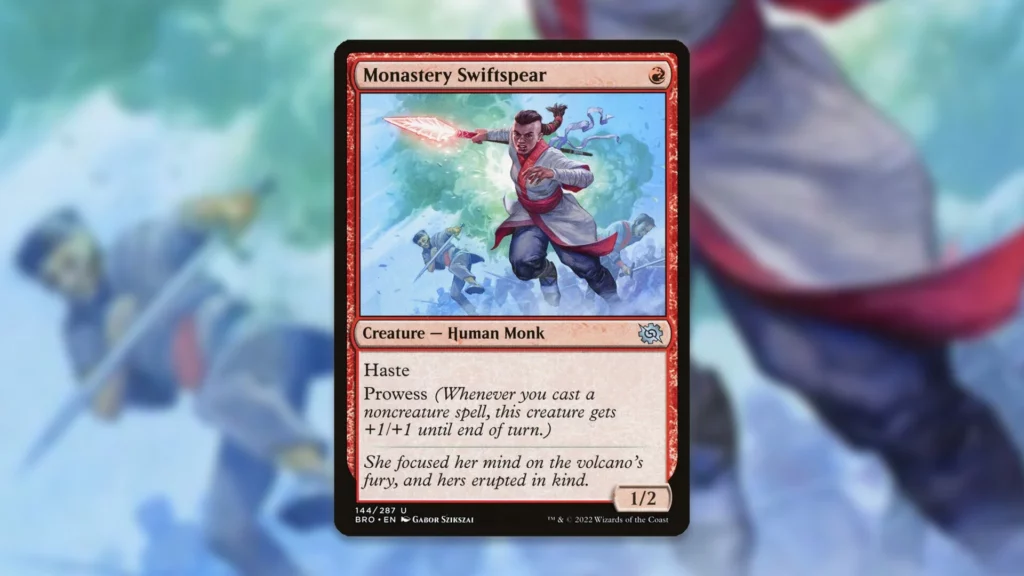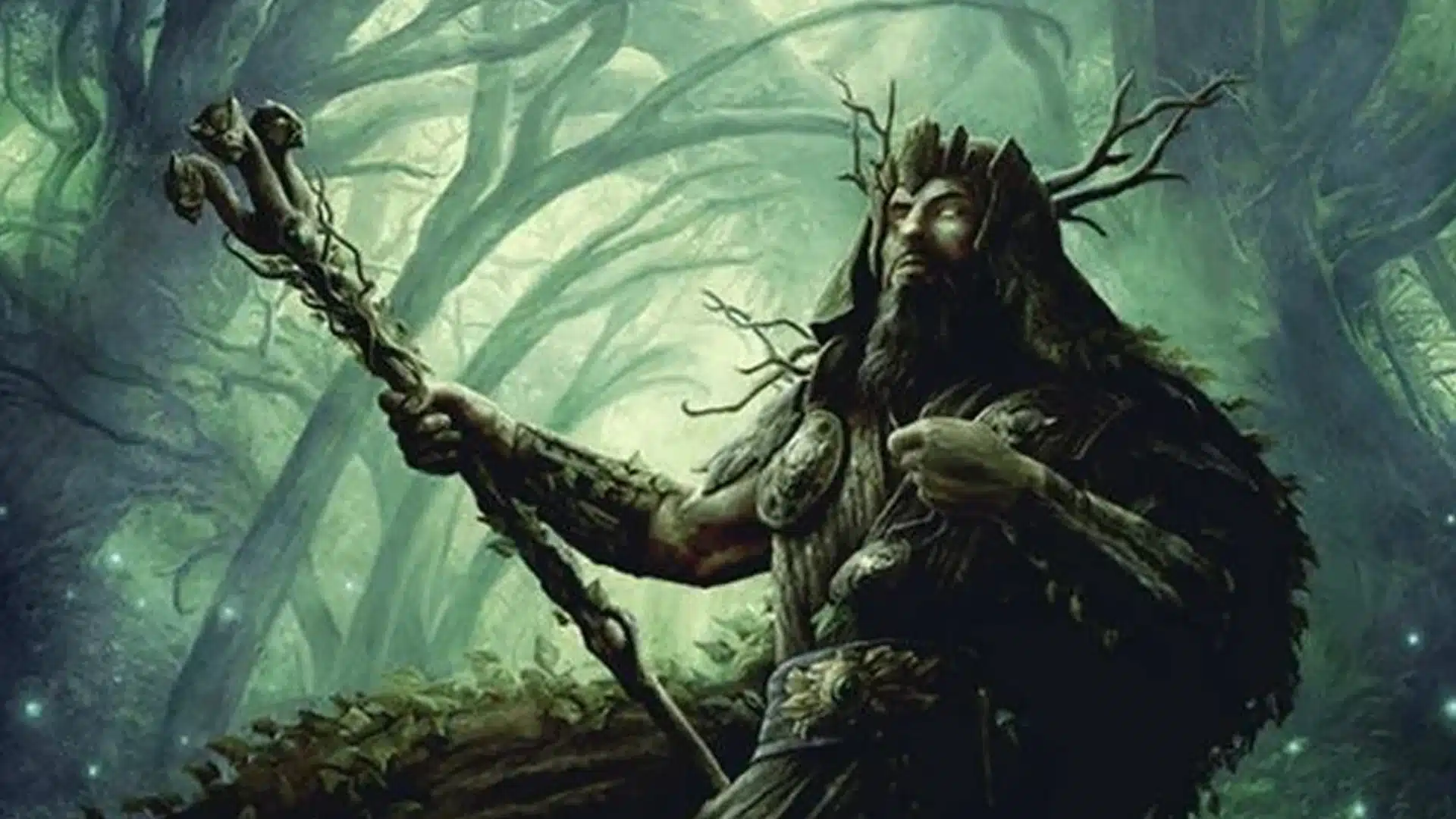This past Monday, a multitude of bans shook up a variety of different Constructed formats. While it felt inevitable that Izzet Cauldron in Standard would get nerfed hard, there were some cards whose bans were unexpected. None fit the bill more than Heartfire Hero in Pioneer.
With one of the major cornerstones of Mono-Red Aggro out of the picture, Pioneer aggro enthusiasts have already started turning to other archetypes. While the latest Magic Online Pioneer Challenge featured zero copies of Mono-Red Aggro in the top 32, multiple Gruul Prowess players had strong finishes. This archetype takes a different approach than traditional Mono-Red, but it still has considerable appeal in the metagame and could become increasingly popular moving forward.
An Alternate Direction

In order for any red aggressive deck to be successful, you need to have a handful of powerful one-drops that help you apply early pressure. Kumano Faces Kakkazan is still a reliable option in Pioneer, but with Heartfire Hero out of the picture, there’s a pretty big drop off after that. That is, of course, unless you put in the work to maximize Soul-Scar Mage and Monastery Swiftspear.
Both Soul-Scar Mage and Monastery Swiftspear are capable of piling on damage in short order, especially alongside Monstrous Rage. The caveat, though, is that you need to play a high density of noncreature spells in order to get the most out of them, a condition that pre-ban Mono-Red Aggro didn’t meet. As such, this shell abandons Manifold Mouse, Sunspine Lynx and Screaming Nemesis entirely in the maindeck in favor of more cheap spells like Heroes’ Hangout.
You still get to make use of Burst Lightning and Kumano Faces Kakkazan as additional ways to trigger Prowess, and because all of your Prowess creatures naturally start with two toughness, Reckless Rage becomes a super reliable kill spell. In conjunction with Soul-Scar Mage, you can even use Lightning and Rage to eliminate Indestructible creatures. This comes up a lot versus Seasoned Hallowblade and Guardian of New Benalia out of Orzhov Greasefang.
Obviously, this assertive red variant is fully capable of curving out and closing games in short order, just with some different tools. Playing a lower curve and passing on Sunspine Lynx does mean you have less in the way of reach, but fortunately, this archetype has other ways of closing out the midrange matchups.
Grinding Through Removal

Thanks to this deck’s high density of cheap spells, you get to take advantage of one of the most broken equipment ever printed in Cori-Steel Cutter. Playing multiple spells in one turn is trivial in this deck, and every Prowess token you create threatens to pile on damage quickly. Assuming you can keep producing tokens, you’ll eventually exhaust your Midrange opponent of all of their removal spells.
Given how important Cutter is in these removal-heavy matchups, you want ways to dig for Cutter while ensuring that you don’t run out of gas. Heroes Hangout fills this role nicely as a one-mana cantrip, but the fun doesn’t stop there. As games go longer, Questing Druid becomes one of your absolute best draws. Not only does its Adventure provide card advantage, but you can then cast the creature half later alongside another spell to help trigger Cutter again. Of course, if you’re ever playing against a combo deck where you just need to apply pressure early, casting the creature on turn two with the intention of rapidly growing it is always an option.
Given how few ways Mono-Black and Rakdos Midrange decks have of getting Cutter off the table, going this direction makes a lot of sense. Sheoldred, the Apocalypse is a concern, but at least Monstrous Rage can help you Trample over the beefy Phyrexian. Plus, a well-timed Scorching Shot out of the sideboard can sway things in your favor. Being able to goldfish a kill as early as turn three and still win attrition battles is a huge luxury, and it’s this versatility that makes the deck so appealing in the field. That being said, there are weaknesses that can be exploited.
Weak Points

As good as the combination of Cutter and cheap spells is, there are some matchups where utilizing more robust creatures would help the cause. First and foremost, missing out on Screaming Nemesis in game one against Izzet Phoenix or Izzet Vivi is a liability considering how much these decks rely on damage-based removal spells. Similarly, the loss of Sunspine Lynx against Selesnya Angels and Golgari Food as an anti-life gain piece makes a big difference.
Meanwhile, playing so many cheap creatures makes it more difficult to sidestep Seam Rip and Temporary Lockdown out of Azorius control. Your Prowess game plan also lines up very poorly against hate cards like High Noon. Even Thalia, Guardian of Thraben out of mono-white can be a nuisance in some spots.
Luckily, some initial metagame shifts do seem to favor Gruul Prowess for the time being. Many players turned to Scapeshift Combo as a way to exploit a field with less aggro and more midrange, for example, and this strategy is fast enough to race most of Scapeshift Combo’s draws. There’s still a lot of time for the Pioneer metagame to continue evolving, but there’s a lot to like about what Gruul Prowess has going for it. Red Aggro is far from dead, so disrespect it at your own peril.
Stick with us here at mtgrocks.com: the best site for Magic: The Gathering coverage. Be sure to check out our deckbuilder for your next big brew!
